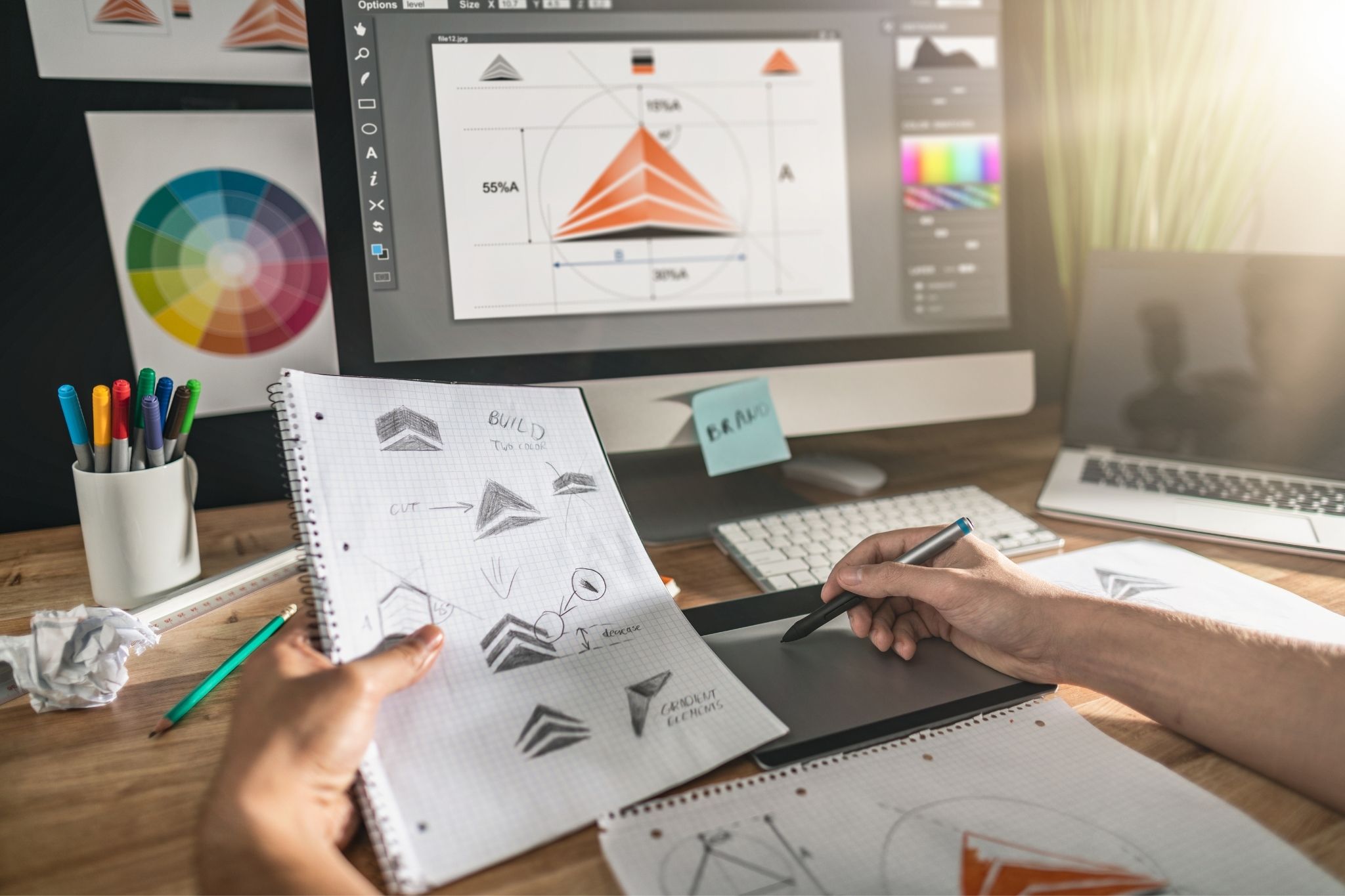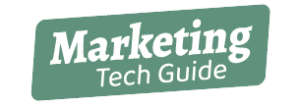Can I Learn Graphic Design On My Own?
August 13, 2021
Graphic design is the craft of creating visual content that communicates meaning to others through images, words, and symbols. It is a form of art that can be produced by following a specific set of design rules. As long as you adhere to those rules, you can learn to construct excellent designs without formal training.
Yes! Anyone can learn graphic design on their own. Many fantastic online resources can assist your independent studies, such as YouTube channels or specialized training seminars. However, there are reasons you may want to earn an accredited degree in graphic design if you're looking to pursue a full-time job in this field.

For example, a graphic design degree will teach you how to handle and incorporate peer feedback. Using constructive criticism to improve your design work is a skill you won't easily learn solo.
Studying graphic design takes time and dedication. These are a few tips for beginning your design journey that I wish someone had told me when I was new to graphic design.
Graphic Design Degree Not Needed
Plenty of phenomenal graphic designers do not hold a degree in design. Compared to dentistry or counseling, you do not need any formal certifications to work in this field.
As someone with a BFA In Graphic Design, I usually discourage anyone interested in design from jumping right into formalized schooling right away. While these programs will expose you to design reviews and critiques, they often use outdated materials.
The problem is that formal institutions tend to operate under the assumption that most designers will work at an advertising agency. However, these days it's far more common to see designers become freelancers or in-house designers.
These alternate career paths are widespread among those who already have a degree in something else. Many degrees serve as a lovely compliment to graphic design, such as business, English, architecture, and fine arts.
If you do not already hold a four-year degree, that's ok! It will just mean you need to have a stellar portfolio.

Independent Study and Research in Graphic Design
Even if you choose to enroll in a formal program, you will still need independent study and experience to stay competitive in the industry. So, if you have to do it anyway, why not start on your own? Practical experience is most effective in the workplace anyhow.
Say you want to get a job in print design. Your best bet would be to get a part-time job at a printing company to gain experience. If you want a career in web design, you should seek a job that involves making websites. Then, you can add these experiences to your portfolio.
Learning Graphic Design Solo
Whether you are fresh out of high school learning graphic design or looking to make a career change, there may be opportunities to gain experience in graphic design.
If you are currently working at a company, keep an eye open for opportunities to do some graphic design in your current role. You could take the time to format your PowerPoint presentations in a cool way. Or you could go as far as to tell your manager you're seeking some "stretch" projects that would allow you to pitch in on some designs more formally.
Typically to get the title of "graphic designer," you will need several years of experience and a portfolio showing off what you can do. Start working on this as early as you can.
There are also situations where companies will place professionals who have no design experience into graphic design roles. This mismatch usually happens during a reorganization within the business. Those employees wind up scrambling to learn more about graphic design to do their job well.
I recommend these tools for anyone trying to learn graphic design independently without spending time and money on a formal program.
| Recommended Learning Sources | Description |
| YouTube (obvious, but really a good place to start!) | YouTube is a fantastic resource full of talented industry professionals who are willing to share their graphic design knowledge for free! A few channels I would recommend starting with YouTubers such as Will Paterson, Adobe Photoshop, and PHLearn. Don't hesitate to search around and find other creators that match your learning style. |
| TutsPlus | TutsPlus is a great place to learn specific techniques in design software. They have over 20,750 free how-to tutorials for learning graphic design, photography, web design, and more. For example, they have tutorials on how to achieve different effects using Photoshop filters. |
| Phlearn | Phlearn is an excellent learning resource for photographers. It has an extensive curriculum with tutorials to help you master Photoshop, Lightroom, and Photography. |
| LinkedIn Learning | LinkedIn Learning offers excellent free graphic design courses that emphasize the soft skills you need to succeed in a corporate setting. I find some of the classes a little dry, but the benefit is that you can add these credentials to your LinkedIn profile once you've completed them. |
| Non-Designers Design Book by Robin Williams | This book covers design principles and talks about repetition, proximity, alignment, contrast, color, and typography. It also includes tips for creating different materials like brochures, flyers, or letterheads. |
| Thinking with Type: A Critical Guide For Designers, Writers, Editors, & Students by Ellen Lupton | Thinking with Type is one of my favorite books! It covers the basic rules of typography. Even if you only read through the "type crimes," you will gain a pretty good understanding of how to use typography effectively. |
| Logo Design Love: A Guide to Creating Iconic Brand Identities by David Airey | Logo Design Love is an excellent guide on how to combine graphic design with marketing. This book is perfect for anyone looking to create a unified brand or interested in freelance logo design. There are some processes outlined in this book that can help you work smoothly with clients or bosses. |
| 100 Things Every Designer Needs to Know About People by Susan M. Weinschenk | This book combines psychology and design. It explores how people think and why they take specific actions. For example, it explains how people's attention span works and how you can use that knowledge to create a compelling call to action. |
You Need a Portfolio
Most design schools will focus on getting your portfolio ready during your last year so you can get jobs faster. If you're studying graphic design independently, you'll need to work on your portfolio consistently.
Your portfolio is the key to landing jobs in the design industry. Envato.com is a fabulous tool for creating product mockups that can spruce up your portfolio. Displaying your work in front of different backgrounds can add a professional finishing touch.
In your portfolio, interviewers usually expect detailed explanations for why you made specific design choices. They do this to learn about your style and ensure your work isn't just a template from iStock Illustrations or Envato Elements.

Must Have Design Tools to Learn Graphic Design
The design tools I suggest to professionals transitioning to the graphic design field are Canva, Behance, and Feedly.
Canva
Canva is an intuitive, easy-to-use design platform that you can use to create marketing and web materials. Unlike other graphic design tools, the basic version of Canva is free. It comes with plenty of free templates to choose from, so try it out and see if it works for you!
The pro version of Canva gives you the ability to easily resize designs and set your brand logos, colors, and fonts. Plus, you gain access to premium stock photos, sounds, elements, and videos.
Some professional designers use Canva, while others opt for the industry-standard program, Adobe Illustrator. Unlike Canva, Illustrator is challenging to learn and much more expensive. Canva is a low-risk tool to start with, especially if you're not sure graphic design is the career path for you.
Behance
Behance is an excellent place to look for inspiration for your graphic design projects. It's a platform that features graphic design projects worldwide (both good and bad). You can sort through and see what designs draw you in and which ones hurt your eyes.
I strongly encourage people pursuing a graphic design career to make it a habit to browse Behance at least once a week.
Here you can find templates that make your work look like a million bucks. You can use them to make your portfolio look more professional or when presenting work to your clients.
For example, to help others visualize what your finished work will look like, find a picture of a laptop sitting on a desk and insert your design onto the screen.
Feedly.com
Feedly is a terrific tool to use to pick up and stay current with trends in the graphic design world. All you need to do is type in a term you want to know more about, and you will see a list of recent blog posts on that topic.
A tool called Leo can help you declutter your feed by filtering for the most important blog posts. You can save lots of search time by prioritizing specific keywords, trends, or topics.

Conclusion
You CAN learn graphic design by yourself with online courses, tutorials, and books. Tools like Canva and Behance can make you just as successful as a designer who went through a formal program.
However, a noteworthy downside of learning graphic design on your own is that you will not have your work critiqued by fellow students and instructors. The Peer feedback you receive in school can do a lot to sharpen your skills.
While feedback is valuable, it isn't essential. And considering that the total cost of a bachelor's degree in graphic design typically ranges from $50,000-$150,000, you may as well start by learning on your own.
